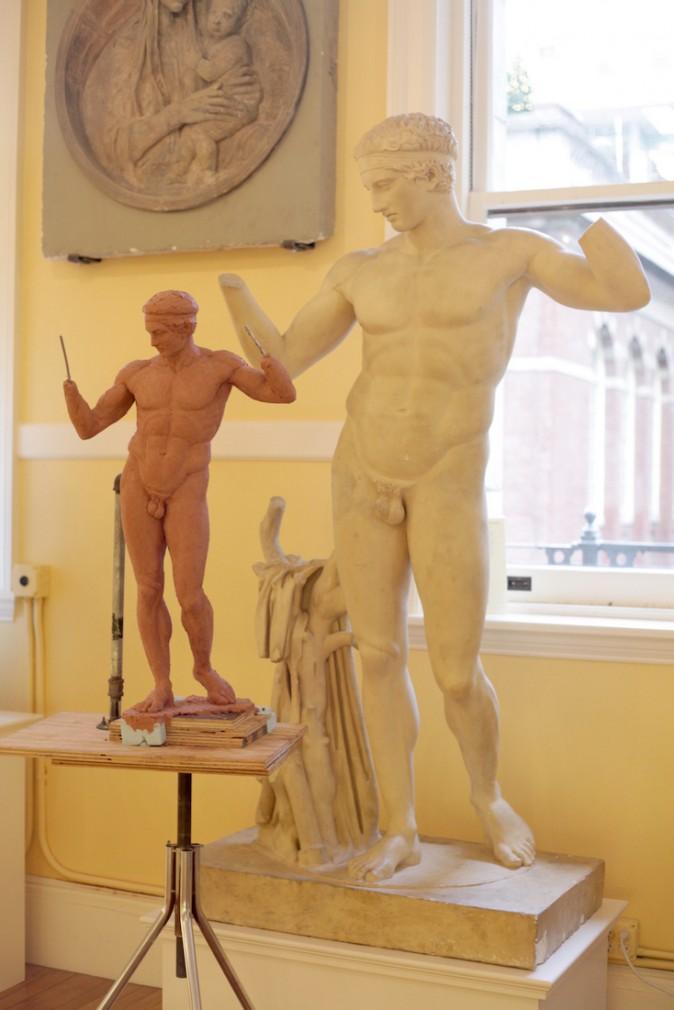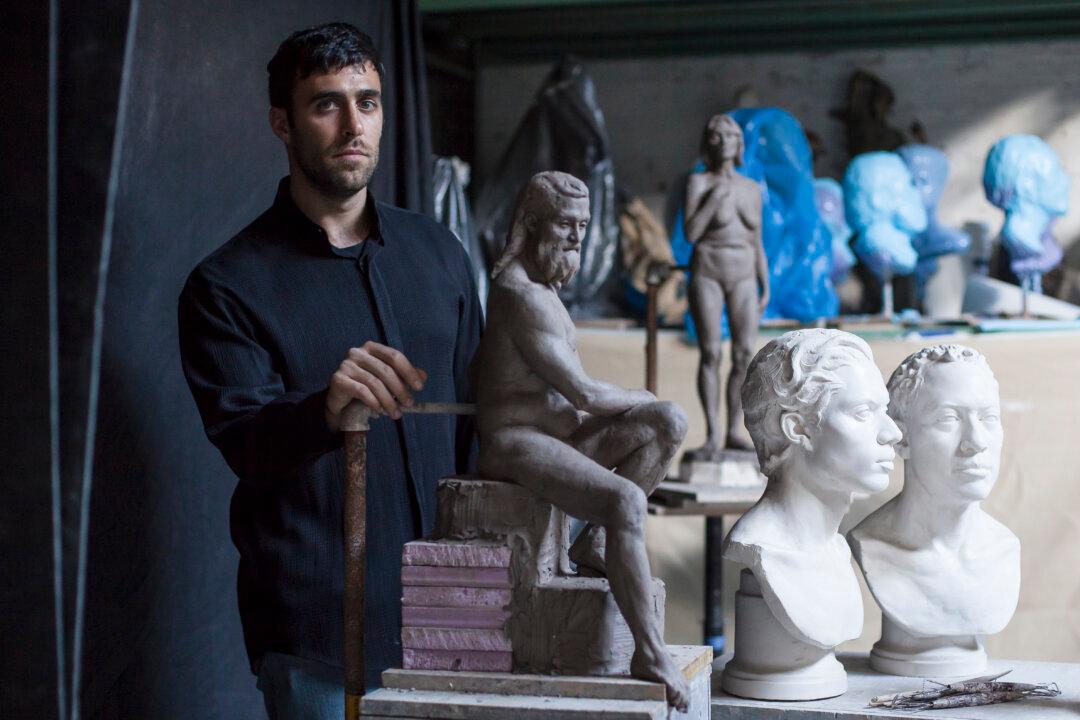NEW YORK—Charlie Mostow likes to keep things simple—from the singular to the universal. Everything he does, everything he observes and experiences, relates to art. He focuses on creating sculptures that conceivably emit a higher ideal and hopefully will appeal to people over the centuries.
“There’s nothing that I do that feels superfluous to this whole, singular life that I have. It is all interconnected,” he said in Grand Central Atelier (GCA), where he sculpts and teaches. Those thoughts echoed the balanced proportions of the ancient Greek statues from which he draws inspiration.
Contemplating past and future, the 28-year-old classically trained sculptor finds himself at a transition in his early career. Mostow, who grew up in Seattle, was repeatedly drawn to art from a young age and throughout his undergraduate studies in literature in San Francisco. Later, he studied with graduates of the Aristides Atelier in Seattle before moving to New York to study at GCA. While working as an artist in residence this past year, he has been completing a steady stream of commissions. In early September, he will be moving to Paris for at least a year, maybe longer.
[gallery size=“medium” ids=“2277943,2277946,2277947,2277951,2280536”]
“I feel so lucky,” he said. It will be his first time in the city of light, where he plans to explore the Louvre and other museums. “For the most part, I'll keep it simple.” He plans to draw and sculpt alongside other artists, including his girlfriend Jessica Artman, who will be teaching at the recently founded Paris Academy of Art.







